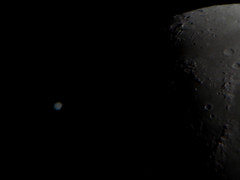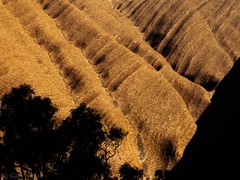When I was using Four Thirds dSLRs, the Olympus mZD 50-200mm f/2.8-3.5 lens was one of my favorite lenses, and had many advantages over anything that Canon or Nikon made for full frame dSLRs in that field of view (100-400mm in full frame terms) at that time BUT it was still intimidating in size when extended.
This lens is still a beautiful lens but now with Micro Four Thirds, it is a touch too big and the AF is not well optimised, especially if you are not using an Olympus OM-D E-M1 mark II to shoot with.
In Sept 2014, Olympus introduced a Micro Four Thirds version albeit with less telephoto reach, the very versatile, excellent, Olympus microZD 40-150mm f/2.8 lens which I thought I would not like but it has become one of my most used lenses – particularly great for shooting in the rain with its nice long lens hood to protect the front glass. If you need more reach, it can be mated with the 1.4x teleconverter to get to 200mm f/4.0.
Now, Panasonic has created their version with similar zoom range to the old Four Thirds lens.

Let’s see how they compare:
| Olympus mZD 40-150mm f/2.8 | Panasonic 50-200mm f/2.8-4.0 OIS | Olympus ZD 50-200mm f/2.8-3.5 | Canon EF 100-400mm f/4.5-5.6L IS II | |
| Price | $US1499 | $US1699 | $US1199 | $US2000 |
| Weight with tripod collar on | 0.88kg | 0.66kg but no tripod collar | 1.1kg | 1.6kg |
| Size | 160mm does not extend on zooming or focus | 132mm but extends on zooming | 157mm but extends on zooming | 193mm but extends on zooming |
| Filter size | 72mm | 67mm | 67mm | 77mm |
| image stabilisation | 5EV with IBIS | 6.5EV Dual IS with Panasonic cameras, 5EV with Olympus | 5EV with IBIS | 4EV OIS only |
| close focus | 0.7m giving minimum subject field of 60 x 80mm | 0.75m | 1.2m | 1m giving minimum subject field of 77 x 115 mm |
| diaphragm blades | 9 rounded | 9 rounded | 9 rounded | 9 rounded |
| comments | Lens Fn button; dual linear voice coil motors; 1.4xTC; slower AF on Panasonic cameras; | 1.4x and 2.0x TC | Needs adapter for MFT; Slower AF; 1.4x and 2.0x TC; discontinued; | Only for Canon cameras (Sony mirrorless via adapter); Not optimised for CDAF; 1.4x and 2.0x TC; Flourite glass; optional high resolution camera bodies available. |
I have compared them with the latest and greatest Canon L lens of the same field of view range, and you can see that the Micro Four Thirds lenses are much smaller, lighter, more affordable, and focus closer while their wider aperture and better image stabilisation negates most of the benefits of Full Frame cameras over Micro Four Thirds.
The links above will take you to my wikipedia where you will find more information and links to reviews.
These are all high grade, weathersealed lenses designed for the outdoors.
Do your neck, back and wallet a favor and you will have far more fun with similar image quality with the Micro Four Thirds combinations.
I regularly hike for 2 hours holding the Olympus 40-150mm on a E-M1 camera in my hand the whole time without excessive tiredness – the same could not be said for the Canon full frame option.
If you have a Panasonic camera, go for the Panasonic lens as you will get faster AF and slightly better IS.
If you have an Olympus camera, go for the Olympus 40-150mm, or, if you don’t need E-M1 II features such as Pro-Capture, then the Panasonic should also perform very well if you need the extra reach.
Of course, if you have a Canon dSLR you are stuck having to fork out for the Canon lens and finding a way of carrying it around. Squeezing it under your cabin luggage weight limits on airlines will be challenging, plus they won’t let you into sporting events as most have focal length limits of 200mm for the sports fans.










